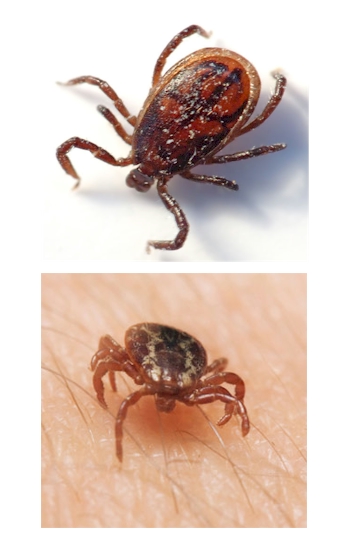- Home
- About Us
- Services
- Pest Control
- Mosquito Control
- Locations
- View Map
- Atlantic Beach, NC
- Cary, NC
- Chapel Hill, NC
- Charleston, SC
- Charlotte, NC
- Durham, NC
- Fayetteville, NC
- Georgetown, SC
- Greensboro, NC
- Hilton Head, SC
- Myrtle Beach, SC
- New Bern, NC
- Pawley’s Island, NC
- Pinehurst, NC
- Raleigh, NC
- Rocky Mount, NC
- Southern Pines, NC
- Topsail Beach, NC
- Wilmington, NC
- Wilson, NC
- Winston Salem, NC
- Contact Us
Learn about Ticks
 Although many people commonly think of ticks as insects, they are actually arachnids like scorpions, spiders and mites. Members of this group have four pairs of legs as adults and have no antennae. (Insects have three pairs of legs and also one pair of antennae.) Ticks are among the most efficient carriers and transmitters of disease because they are blood-feeding parasites that attach firmly when feeding, they feed very slowly and may go unnoticed for a considerable time. Ticks take several days to complete feeding.
Although many people commonly think of ticks as insects, they are actually arachnids like scorpions, spiders and mites. Members of this group have four pairs of legs as adults and have no antennae. (Insects have three pairs of legs and also one pair of antennae.) Ticks are among the most efficient carriers and transmitters of disease because they are blood-feeding parasites that attach firmly when feeding, they feed very slowly and may go unnoticed for a considerable time. Ticks take several days to complete feeding.
Ticks have four stages in their life cycle: egg, six-legged larva, eight-legged nymph, and adult. After the egg hatches, the larva (sometimes referred to as a “seed tick”) feeds on a host. The larva then develops (called molting) into the larger nymph. This nymph then feeds on a host and then molts into an even larger adult. Both male and female adults find and feed on a host, then the females lay eggs sometime after feeding.
Ticks are often found in tall grass where they wait for an opportunity to attach to a passing host. But physical contact is not the only method of transportation for ticks. Some species stalk the host from the ground, emerging from cracks or crevices in trees or even inside a home or kennel. Infestations of “seed ticks” can attack in this way in large numbers. Weak or elderly people, dogs, puppies, horses and livestock, and even cats are particularly endangered by ticks and the diseases they carry. Larger infestations can be difficult to detect until thousands have attached themselves to an animal, making eradication more difficult.


